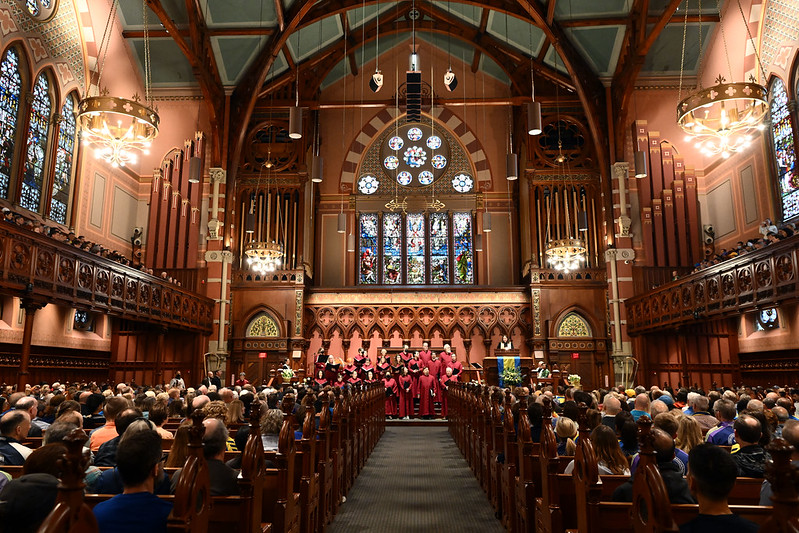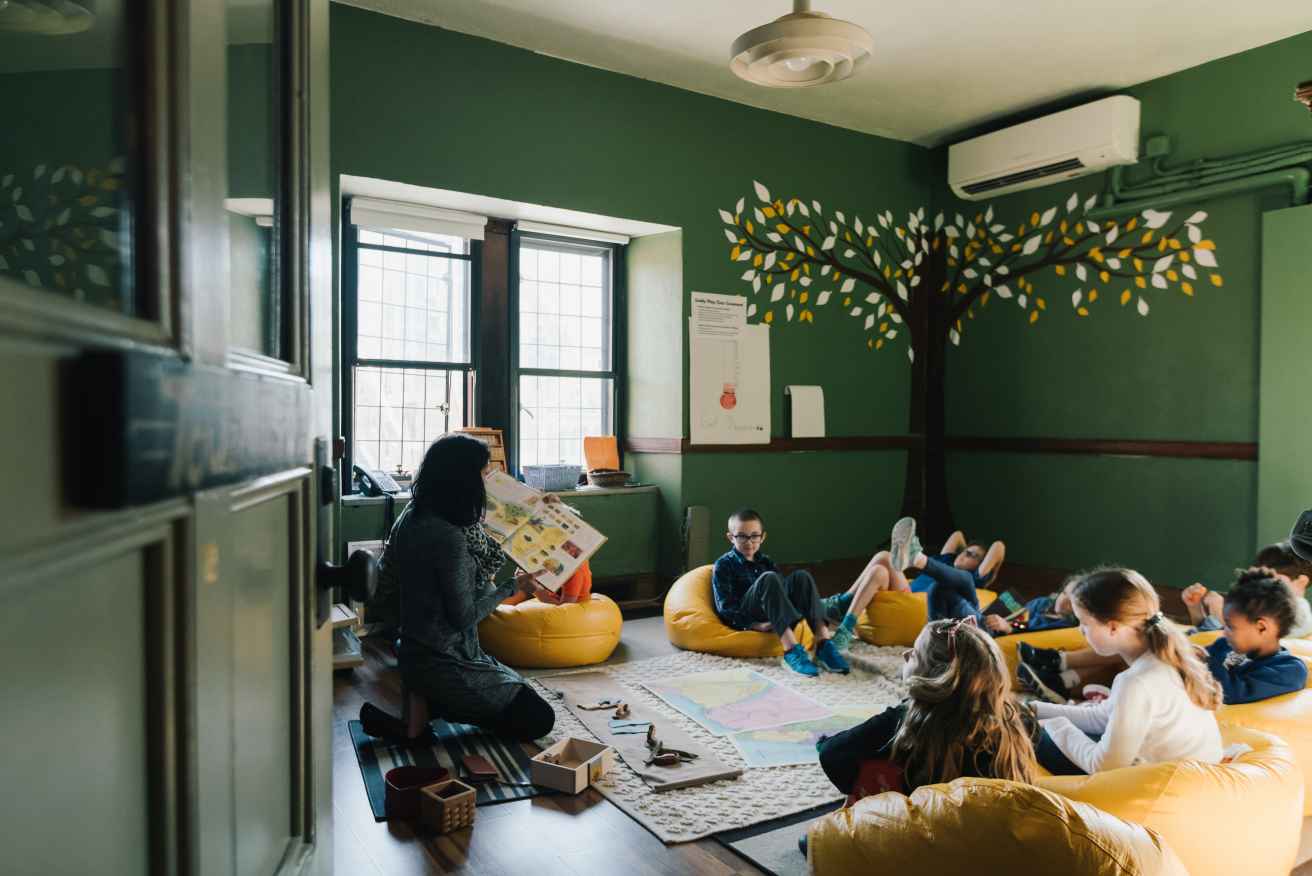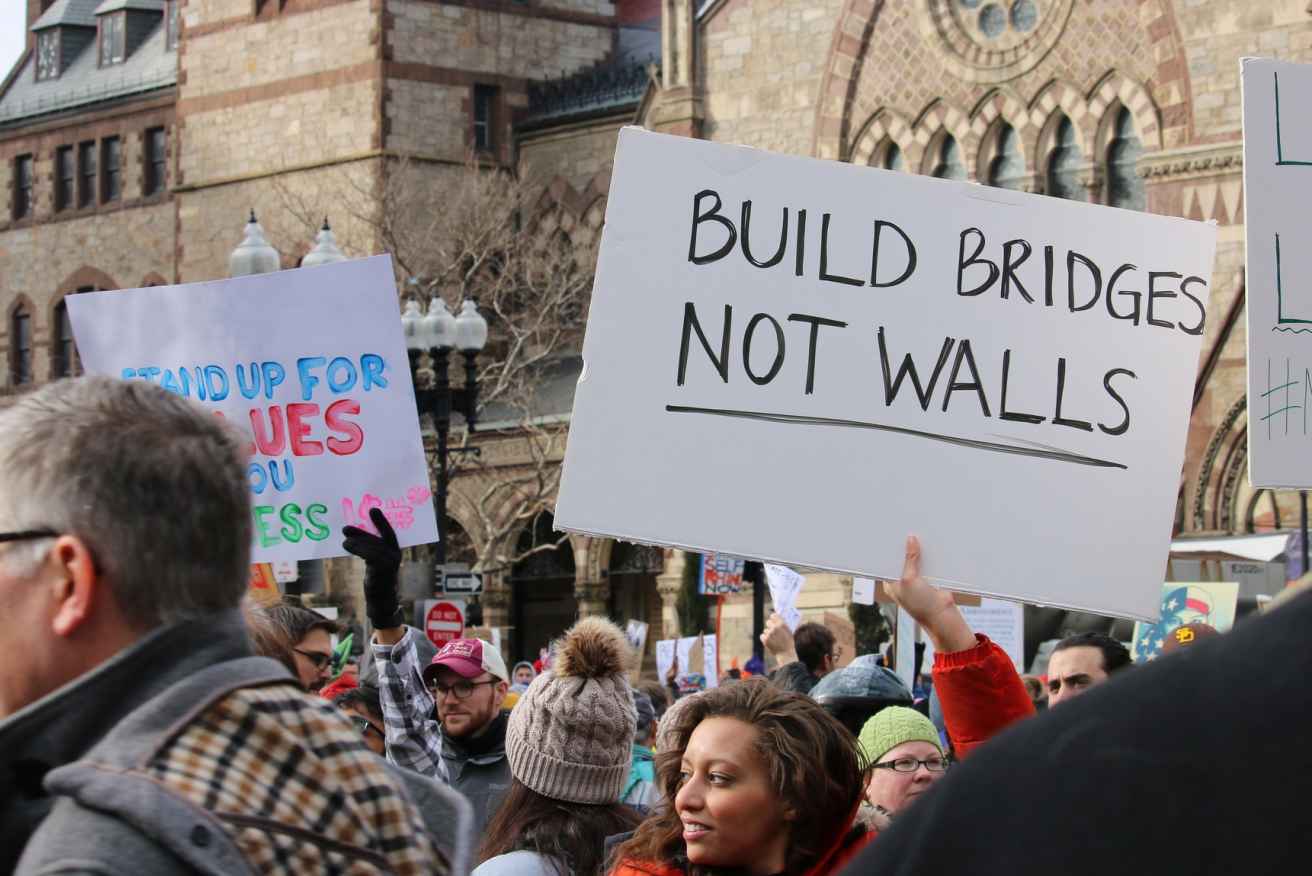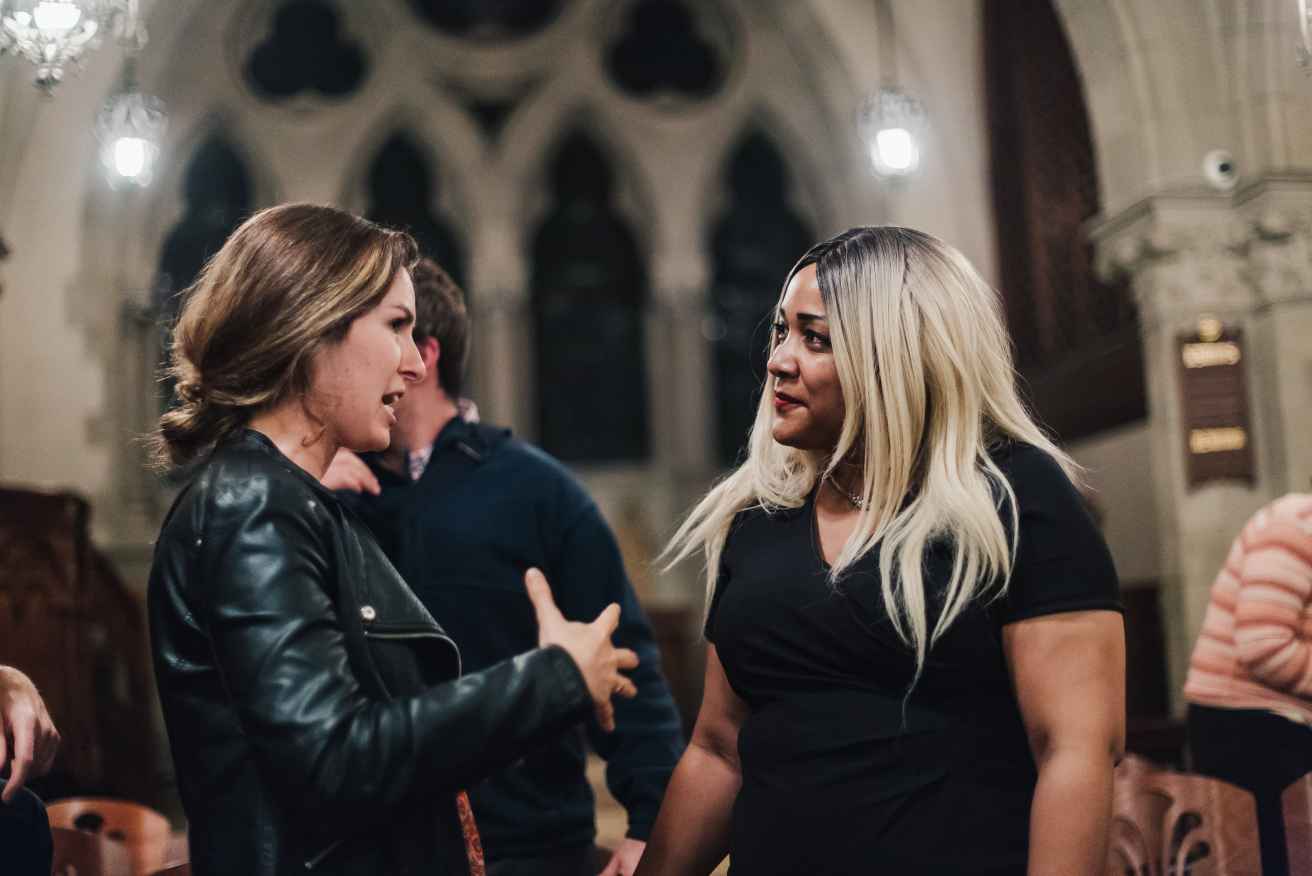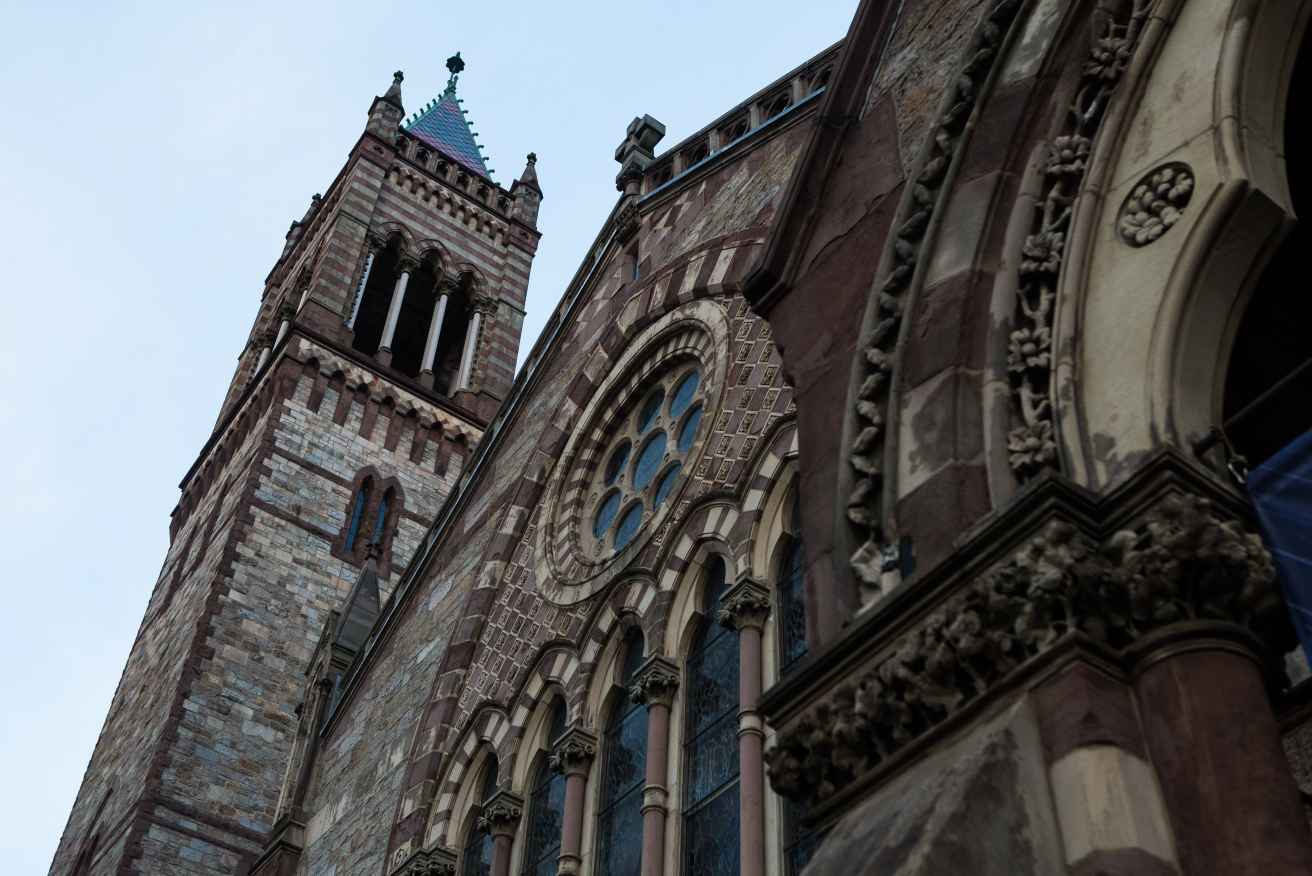Festival Worship
Festival Worship
The Architecture of Grace (339th Annual Meeting)
Old South Sermons:
The Architecture of Grace
the Sunday of the 339th Annual Meeting of
Old South Church in Boston
by the Rev. Dr. Nancy S. Taylor, Senior Minister
Based on Book of Ezra, Chapter 3
Sunday, February 1, 2009
As most of you know, on December 3, 2008, the Dartmouth Street wall of Old South Church was damaged as a result of excavations by the MBTA near our foundation.[1]
Since that day, for the past two months, a team of Old South leaders has poured countless hours into this matter. We have weekly meetings with MBTA along with teams of contractors and specialists. I have, in consequence, found myself reflecting often on the weight of this building … its cost to us as a congregation in upkeep, maintenance and overhead.
I have given much thought to Jesus’ decision to refrain from owning property. Jesus was free to move about, not beholden to a place, unencumbered by either debt or deferred maintenance, and blessedly ignorant of electrical and fuel bills. There is no indication whatsoever that he ever did business with insurance underwriters.
I have found myself asking: Is it worth it? Is this building worth the time and trouble? Is it serving our ministry, our mission, our witness to God? Or is it distracting from and hindering our core purpose? Have we loved the building too much?
On this Sunday of Old South’s Annual Meeting, as we turn and face into our 340th year of ministry, it is well to pause, to ask just such questions and to take stock.
Perhaps you have driven along Memorial Drive and looked across the Charles River to Boston.
There you see the John Hancock: I. M. Pei’s elegant tower with its crystal-like geometry and glass skin … a proud testament to the dominance of a market economy.
There is the somewhat dowdy Prudential Center, topped with bristling antennas, while below and within, it accommodates copious up-scale retail and commercial space.
The red, pulsating neon triangle of the CITGO sign gives witness to an inter-related world of energy needs and consumption.
You can see the old Customs House, the State House’s golden dome and, of course, a dense concentration of glass and steel buildings that comprise Boston’s financial district.
But there are other prominent buildings, quite different than these: the tower of First Baptist Church, the spire of Church of the Covenant and, most prominently, Old South’s own venerable tower.
In the midst of this city’s bustling life – among the temples to knowledge and industry, commerce and finance and statecraft – there are buildings whose sole purpose is to mark the presence of God, the power of God, the purposes of God, the ways of God … so different than the ways of the world.
Viewed in one light, these buildings are dinosaurs. They are throwbacks to a former time. They are, in fact, an endangered species. It was not that long ago that Christian steeples, spires and towers dominated Boston’s skyline. Today they are humbled by buildings that are newer, taller and, frankly, far more heavily traveled. Such buildings were raised up at a time when this was a manifestly Christian nation … but it is no longer so. Today, and thank God, we operate in a world that is religiously pluralistic … it is also, and at the same time, secular. We are now in competition, if you will, with a secular society, with a religiously pluralistic society and with a manifestly materialistic society.
Thus it is that all across the Commonwealth (and, indeed, in cities throughout this country) mainline congregations like ours are selling their buildings to be converted into condominiums, or centers for the arts, or restaurants, or other uses. Crippled by diminishing membership, by shrinking endowments, and by aging facilities, congregations are shedding old, costly buildings in a scramble to survive.
Viewed in one light, these buildings make little sense in a 21st century market-driven economy. We don’t produce anything particularly useful, at least, not as the market measures such things. We do not make or sell widgets. God knows, here at Old South we don’t even sell salvation … for here we believe God owns the exclusive rights to that. (In any case, it is free.) We cannot and do not put a dollar value on what we do.
So, what do we do? Is it worth it? Is it worth the cost?
Well, we sing and ring, strum and drum, blow into woodwinds and horns, and finger keyboards to serenade the author of the Universe, Master of the Whirling Planets, the Divine Mystery that is nearer to us than our own breathing and as far as the most distant star.
As direct consequence of our worship and prayer lives – of resolutely placing ourselves in the presence of God – we gather to wrestle with ethics and morality, with matters of conscience, of sin and of virtue, of war and peace. From the teachings of the prophets we acknowledge that justice and righteousness are two sides of the same coin … that we cannot be righteous, if we do not do justice.
Here we gather to handle together the mysteries of life and death … anointing the foreheads of the dying, wiping the tears of the grieving, and walking with the sick.
Here we meet with, and to the best of our abilities, serve people of every walk of life: the proud and the haughty, the rich and secure; those who are whole and well and bursting with life; and, too, the disenfranchised, the broken, the beaten, the hungry, the addicted, the forlorn, the grief-stricken, the lost and the lonely.
Here, we bless the waters of baptism. We bless athletes and we bless animals (who are, to many of you, part of the family, and to others of you, your whole world). Here, we bless bread and cup. We bless confirmands and ordinands and lay leaders. We bless often and freely because a blessing is a gift of grace. And when we bless – when we hold out our hands and arms in that ancient Christian gesture – our own bodies become conduits for the grace and blessing of God.
From this place, stone by stone, person by person, we construct bridges between Christians, Jews and Muslims … bridges upon which we can safely travel to and fro, to visit, listen and learn, to confess and repent.
Here, for God’s sake, we dare to talk and learn together about racism … naming and facing our own.
Here, we give an unconditional welcome to gay, lesbian, bisexual and transgender sisters and brothers, officiating at their weddings, baptizing their babies … proudly participating in each year’s Gay Pride Parade and fielding a team and raising money for the annual AIDS Walk.
Here we toll the great Tower Bell at times of public lamentation, and peel it in wild jubilation it when there is cause to celebrate.
It is in this place that we have learned to become a teaching church whose joy and privilege it is to welcome theological students, to train up ministers, and to pass on the faith to each new generation.
Our Jazz Worship Service is a laboratory of worship. It is a homework assignment for divinity students, for youth groups and congregations willing to imagine new ways of worshipping in old buildings in order make this old faith fresh, and thereby to capture the spiritual attention and imagination of the next generation.
It is from this place that we podcast sermons and services, sending out across this nation and around God’s whole wide world, a progressive, inclusive, joyful, confident Christian witness … markedly different than that of so many of our Christian sisters and brothers.
It is from this place, that we give money and time to tender, humble and quiet ministries … ministries to the homeless on our city streets, to young people in after school programs in Roxbury and Dorchester, to feeding programs and housing needs.
And every day, every morning, seven days a week, we open our doors and say to passersby (to tourists and the homeless, to those who need to pray, to the cold and the lonely, to history buffs, to students of art, photography and architectural): come in, warm up, have a seat, sojourn with us in the beauty of holiness, pray and, if you wish, leave your prayers in our keeping … for we are but custodians in the house of God.
This morning from the Book of Ezra, we heard the story of the beginnings of the restoration of the Temple in Jerusalem. The first Temple had been built by kings of Israel, by Solomon and David. They built the first Temple with their riches, their power, and, not least, with their royal ability to draft into service a veritable army of artisans and laborers.
The story from Ezra is quite different. It clearly says that the effort to restore the Temple was the people’s effort … it was the people who “gave money to the masons and the carpenters, and food, drink, and oil to the Sidonians and the Tyrians to bring cedar trees from Lebanon …”
The same is true for Old South. In the past this place was raised up and upheld by deep, aristocratic pockets … by masters of industry, shipping and trade. Today, we do it together. This large, grand building which holds and houses, inspires and nurtures a million tender ministries … this is a common effort … this is a people’s church.
In our weekly meetings with the MBTA and its contractors and subcontractors, I have learned that a great many of those people come to the table with certain assumptions about us. One of those assumptions is that Old South has behind us – supporting us, funding us – a diocese or, even perhaps, something akin to the Vatican.
Well, we do not. Look around you. We are it.
This building, this ministry, these programs, this radical hospitality we offer in God’s name … this is a labor of love, a ministry of presence and of place, a sacrifice of time and talent and means … and all of it is symbolized in stone and brick, in plaster and cherry wood, in stained glass and mosaic tile … symbolized and expressed in this architecture of grace … a place that is beautiful because God is beautiful.
The John Hancock, so sleek and gleaming, tells one part of the human story, to be sure. It points to human ingenuity, and to the possibilities, power, dominion and dominance of wealth.
But Old South and Trinity Church, Temple Israel and the Islamic Society’s new mosque, … these give witness to something else … something precious and mysterious … something priceless. For these sacred spaces are designed to serve as windows and doorways into the divine … into the realm of the sacred.
The grandeur of this building, of this architecture, of these windows and carvings – look around you! – are all for a purpose. They are intended to point beyond their own beauty, beyond human ingenuity, and beyond the skill of the artisans who fashioned them. They are designed to point in one direction: to the Creator of all things, Author of the Universe, Master of the Whirling Planets, the Divine Mystery who alone holds our life, our death, our all.
Is it worth it? Is it worth the trouble and the cost?
Oh, yes.
______________________________
The Book of Ezra (most of chapter 3)
When the seventh month came, and the Israelites were in the towns, the people gathered together in Jerusalem. From the first day of the seventh month they began to offer burnt offerings to the Lord.
But the foundation of the temple of the Lord was not yet laid. So they gave money to the masons and the carpenters, and food, drink, and oil to the Sidonians and the Tyrians to bring cedar trees from Lebanon to the sea, to Joppa, according to the grant that they had from King Cyrus of Persia.
They appointed the Levites, from twenty years old and upward, to have the oversight of the work on the house of the Lord. And Jeshua with his sons and his kin, and Kadmiel and his sons, Binnui and Hodaviah along with the sons of Henadad, the Levites, their sons and kin, together took charge of the workers in the house of God.
When the builders laid the foundation of the temple of the Lord, the priests in their vestments were stationed to praise the Lord with trumpets, and the Levites, the sons of Asaph, with cymbals, according to the directions of King David of Israel; and they sang responsively, praising and giving thanks to the Lord,
"For he is good, for his steadfast love endures forever toward Israel."
And all the people responded with a great shout when they praised the Lord, because the foundation of the house of the Lord was laid. But many of the priests and Levites and heads of families, old people who had seen the first house on its foundations, wept with a loud voice when they saw this house, though many shouted aloud for joy, so that the people could not distinguish the sound of the joyful shout from the sound of the people's weeping, for the people shouted so loudly that the sound was heard far away.
[1] The damage resulted in crack from below ground, all the way up the wall and onto the ceiling and roof.

